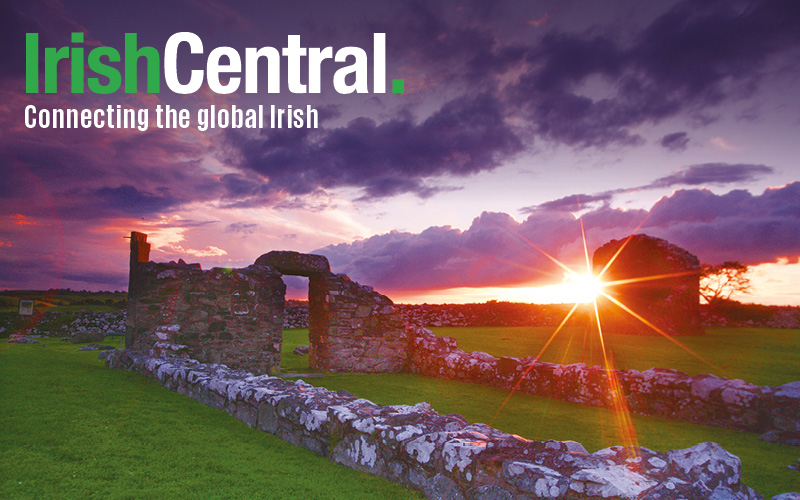Up to 300 convicts were led by Kerry-born Philip Cunningham in a revolt on a New South Wales prison farm at Castle Hill on March 4, 1804.
Philip Cunningham and his fellow Irish rebel convicts planned to seize ships and sail back to their native land but, the authorities declared martial law, the first time it was declared in Australian history, and the revolt was quickly crushed.
The rebel's last stand took place on a hill they called Vinegar Hill, in honor of the famous place in Wexford which saw the United Irishmen take a stand, in 1798.
In the early 1800s, New South Wales hosted shiploads of Irish convicts. These were men sent to the other side of the world for their roles in "treason against the crown," men who took up pikes against the red coats in 1798 and others who stood with Robert Emmet in 1803. One of those was Philip Cunningham.
Read more: The Meath man behind the international labor anthem "Red Flag"
Philip Cunningham was born in Glenn Liath, Moyvane, in the parish of Molahiffe in County Kerry. He went to Clonmel with his trade as a stonemason in the 1790s and in 1798 he aided United Irishmen in Tipperary. He was not seen as a rabble-rousing man, rather an articulate gentleman and during his trial the Mayor of Clonmel provide a character reference for him, such was his standing in the town!
It was in 1799 that Cunningham found himself before the courts to answer a charge of treason. After the failed rebellion in 1798 Cunningham set about reorganizing the United Irishmen in Munster but, the authorities arrested him, put him on trial and set in motion his journey to the land down under.
Cunningham was sentenced to transportation and in 1800, he and other rebels were sent to Australia on board The Anne. On route, there was a minor mutiny that saw the rebels take over the ship but only briefly. Order was restored and the rebels were lashed before landing at Botany Bay.
Read more: How the Irish invented the boycott after tenants were thrown off their land
Cunningham was sent to the Government work farm at Castle Hill and he wasn't there long before he escaped. He was quickly apprehended trying to board a French sailing ship and for this bold act, Cunningham received 100 lashes. This did not deter the Kerryman from making another bid for freedom and on the next occasion, he would lead an army of rebel convicts.
On March 4th, 1804 Cunningham led convicts in revolt at Castle Hill. They overpowered the guards, took their arms and then split into sections and raided nearby farmhouses.
To spread a full-scale rebellion, a messenger was tasked with sending word to convicts at nearby Hawkesbury farm, but the messenger was intercepted by the authorities before he reached his destination. Cunningham in the meantime was moving his band of rebels towards Hawkesbury thinking the rebels there would be in revolt but, little did he know that his message of revolt had failed to reach there.
The Castle Hill rebellion forced New South Wales governor Philip Gidley King to declare martial law and order the New South Wales Corps to quell what they considered a convict riot.
Major George Johnston led the New South Wales troops to where the rebels had gathered at 'Vinegar Hill' and with a Catholic priest in tow, he called on Cunningham to meet halfway on the battlefield to negotiate terms. Seeing a priest accompanying Major Johnston gave Cunningham a false sense of security so he approached them, unarmed. The Major and the Priest asked Cunningham to abandon his revolt. The response they got from the Kerryman was: "Death or liberty and ship to take us home!"
A scuffle then broke out between Cunningham and the New South Wales troops. It resulted in Cunningham getting a slap from the sword of a Lieutenant Laycock while the troops fired on the rebel convicts. 15 were killed and many more injured. Those still standing fled into the bush where 15 were shot down in pursuit.
Cunningham, who was severely injured, was taken to a government store and hanged on March 6th. The others hanged without trial were Charles Hill, Samuel Humes and John Place at Parramatta. William Johnson, John Neale and George Harrington were hanged at Castle Hill. Jim Brannon and Tim Hogan were hanged in Sydney.
Today a plaque marks the spot of Cunningham's death at the corner of Windsor Road while a wreath is laid annually at the nearby convict burial ground where Cunningham was buried. At 'Vinegar Hill' there now stands a fine monument to mark the site of Australia's first revolt led by a man from the Kingdom.
Read more: The discovery of a famine cross from The Great Hunger
* Originally published in March 2019.
This article was submitted to the IrishCentral contributors network by a member of the global Irish community. To become an IrishCentral contributor click here.




Comments